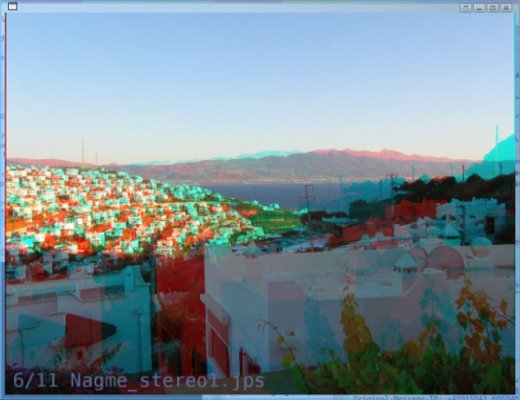SIV-1.0 released
I’m proud to present a new version of SIV, the stereoscopic jps viewer for Linux I published first in SIV – a stereoscopic jps viewer for Linux. SIV is capable of displaying jps stereo images in different stereo modes. I tried it in fullscreen/windowed mode with anaglyphic and quad buffered stereo mode. Different output devices I tested were my Vuzix VR920 and relevator shutter glasses on Nvidia Quadro FX 350M and FX 3400. It should also work with an Ati FireGL, but I never tried this. The new version fixes some segfaults, that occured when needed libraries were missing. Furthermore I added a slideshow mode and the possibility to specify a default distance and therefore the possibility to set a default zoom factor. The coolest feature I added to the viewer is the headtracking support for the Vuzix VR920 HMD. For this you will need (in addition to the device 😉 ) the headtracking driver, I published in VR920 headtracking driver for Linux. You may watch a video (demo_siv_headtracking_vr920) of me using the viewer with enabled headtracking to view some photos of NASA’s Apollo missions downloadable from nvidia forums.
Usage changes:
New commandline options are:
- -s Enable slideshow mode
- -t delay Delay for slideshow mode,
defaults to 10 sec - -d distance (values between 0.0 and
1.0 are senseful)
These new options control the new headtracking support:
- –vr920 enable headtracking support for the vuzix vr920 hmd
- -m non default multicast ip
- -p non default multicast port
For detailed information on the -m and -p options see the article about the headtracking driver : VR920 headtracking driver for Linux. They have the corresponding meaning. If you want to try out the headtracking, enable the headtracking support with the –vr920 option. You may want to specify the distance to the image with the -d option. Values between 0.25 and 0.5 seem to have a nice effect when using the headtracking. When headtracking is active you may press Z to set the zero view so that with your current head position you will see the center of the image. If you want to manipulate the view manually press 2 to enable the trackball manipulator and use i.e. the right moue button and up or down movements (with the mouse) to control the distance (zoom in or out). Afterwards press 1 to activate headtracking again.
For more usage documentation see: SIV – a stereoscopic jps viewer for Linux
I decided to publish the viewer under the creative common noncommercial license. Make sure you have the OpenSceneGraph library installed before trying to compile or run the viewer. You may download the full source (Eclipse Project) from here: SIV-1.0 source (2446 downloads ) or an x86_64 binary from here: SIV-1.0 x86_64 binary (2648 downloads ) . More binary formats may be available in the future. Fore the x86_64 binary you’ll need OpenSceneGraph-2.8.
Binaries for most linux distributions can be downloaded from www.openscenegraph.org. Instructions on how to build OpenSceneGraph on gentoo can be found on PlopByte.
Building from source:
For building from source unpack the zip and cd to siv/Release and run make.
Footnote:
If you like the viewer, feel free to link to www.mygnu.de. To request commercial licenses contact us at info(at)mygnu.de. Well, if you just want to support our work on MyGNU.de use the donate button 😉
best regards and enjoy the 3rd dimension
Jürgen
 MyGNU.de
MyGNU.de






![Validate my RSS feed [Valid RSS]](https://validator.w3.org/feed/images/valid-rss.png)

